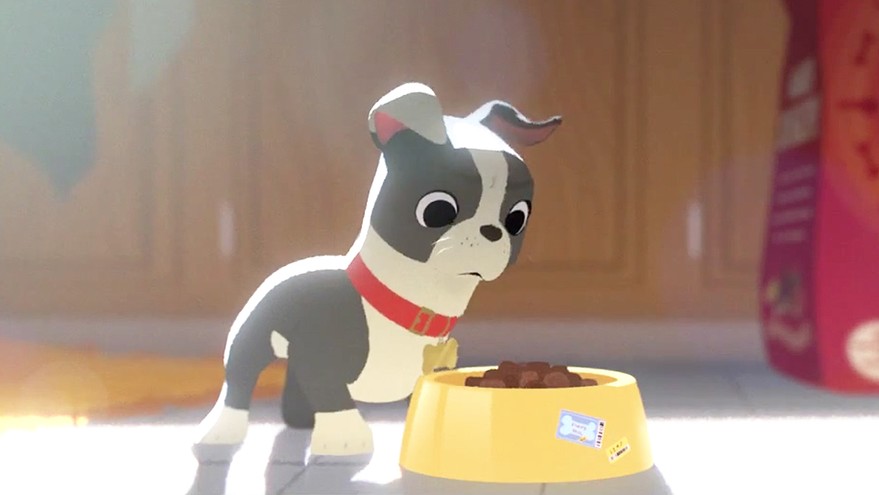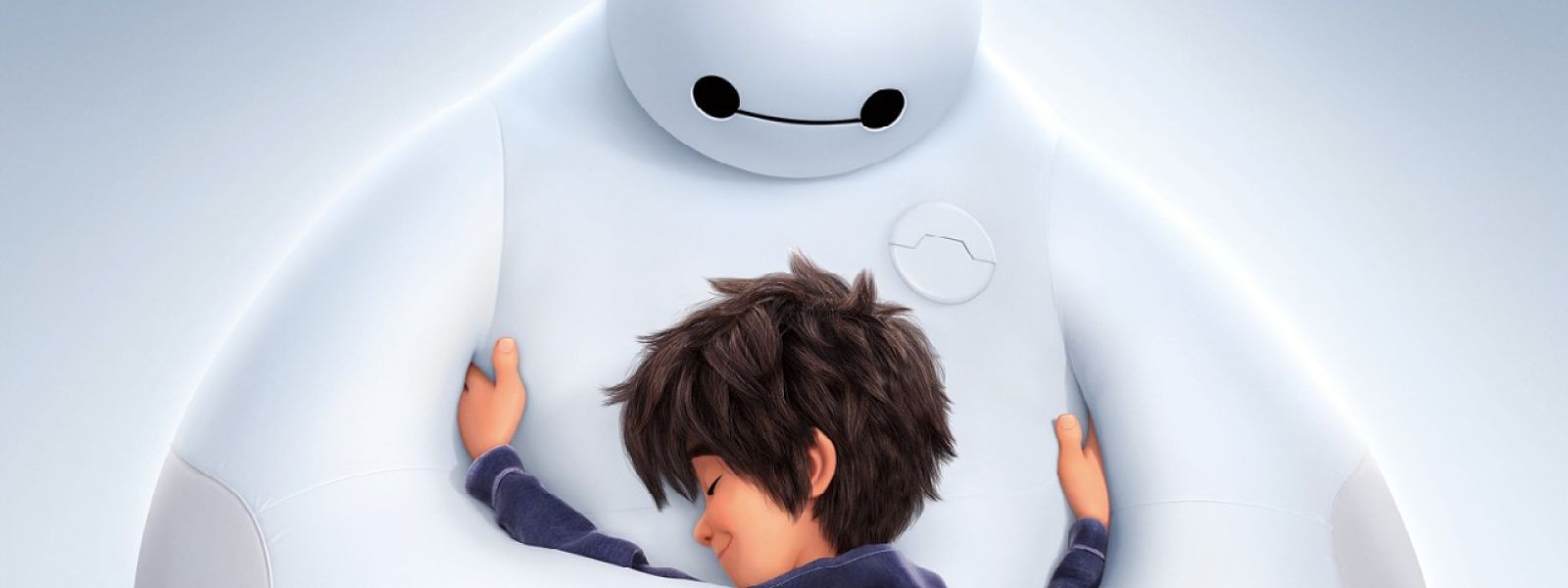This article is part of Film Week, Kill Screen’s week-long meditation on the intersection between film and videogames. Check out the other articles here. And, if you’re in NYC, grab tickets to our Film Fest at Two5Six on Friday, May 15th.
////
Here’s a story that may sound familiar to you, if you’ve ever played a videogame. Picture a small hero, early adolescent, on a quest to undo the workings of a shrouded nemesis. Behind him waddles a companion very much unlike him: different in body, different in mind, neither human nor animal nor entirely object. This companion is, in many ways, a gigantic liability. He’s prone to getting stuck, vulnerable to enemies. He spends a lot of time standing around, not knowing what to do. He needs constant attention and the guiding hand of the hero to get through narrow spaces and climb to higher ground. But he, in turn, has abilities of his own. He saves the hero at a crucial moment, in an act of profound self-sacrifice. We get a little choked up, seeing the purity of his moral universe in one deliberate, defining action. We’ve never met anything like him in real life, but perhaps we wish we could.
///
In this blossoming era of high-quality Disney 3D animated films that aren’t made by Pixar, Wreck-It Ralph is the entry most obviously indebted to videogames, but Big Hero 6 might be the film that really understands them. Set in “San Fransokyo,” a hybrid place, the film doesn’t contain or refer to specific games overtly so much as it depicts a world half-governed by videogame logic—a world in which, among other things, people can become superheroes by creating armor upgrades with a 3D printer. What it borrows most of all, I think, is neither a broadly construed aesthetic (like “retro”), nor a set of familiar themes (like “virtuality”), nor a way of staging or framing action, but a kind of character. We’ve interacted with him before. Games in the ‘90s and early 2000s made us interact with him a whole lot; some games, attached to certain perennial genres, still do. He is Princess Ruto in Ocarina of Time. He is Makar in The Wind Waker. He is Pooh in Kingdom Hearts. He is Yorda in ICO; perhaps, in a parallel universe, he would have been the guardian in The Last Guardian. He is the Companion Cube—that quintessential object of annoyance and yet, at the same time, disproportionate emotional investment.

When it came out last year, Big Hero 6 was accompanied by the short film Feast, a cinematic companionship that worked well in part because both were about companion figures. Feast looks at a regular guy’s life through the eyes of his dog, who eats what he discards: pizza and burgers when he’s a bachelor; brussel sprouts when he’s in a relationship; thick desperate scoops of ice cream when he’s a bachelor again. Big Hero 6 centers on Baymax, a benign, marshmallow-shaped “healthcare companion” robot who helps 14-year-old Hiro Hamada investigate—and then avenge—the death of his older brother, Tadashi, who built Baymax in the first place. In a lot of ways, the dog in Feast and Baymax from Big Hero 6 are similar figures: nonhuman yet anthropomorphic; innocent, selfless, devoted. But the dog is an autonomous consciousness and an agent of existential challenge, really more human than not. At the climax of the film, he decides what’s best for his couch-bound master and chases the girl himself. Baymax, by contrast, is a clunky (but deeply lovable) AI whose assistance is largely prosthetic. He is an extension of Hiro’s own intentions and abilities, much like the swarming, modular “microbots” that get Hiro into trouble. He is full of surprises, but they derive from creative interpretations of his Hippocratic programming. He becomes a figure of wisdom inadvertently, and a figure of pathos when he doesn’t quite understand—or maybe does understand, in a way that’s inhuman yet deeply humane—the noble sacrifice he makes.
One thing Hollywood seems to understand is that every Don Quixote needs a Sancho Panza: the sidekick, not the hero, is the moral center of any quest narrative, grounding the hero in reality, devotedly keeping him on track by being his dialectical foil. That role has an emotional payoff: I think it’s safe to say that we care a lot more about Samwise Gamgee than Frodo, and more about Groot than Rocket Raccoon. Yet Baymax isn’t exactly a sidekick in the Sancho Panza mold; he’s a sidekick in the “A.I. Companion” mold, bearing logistical challenges more familiar to those of us who have grown up navigating rooms full of puzzles and monsters with helplessly rule-bound NPCs.
When I think of Groot I think of his considerably less able-bodied little cousin, The Wind Waker’s Makar, who’s basically a tree stump with a leaf for a face. He waddles gracelessly, gets scared easily; he has to be rescued by a child barely taller and infinitely braver than he is. When you take him into the Wind Temple, he becomes the source of myriad frustrations. He gets lost; he gets stuck; he just sits there like an idiot unless you carry him or use a song to control him. But I don’t think I was alone in being strangely moved when I reached the end of his story—when he becomes the Sage who must protect this holy site, and vows to protect it until the end of his little days. Like the other Sage in Wind Waker, Makar is the evolved (or devolved) form of a humanoid creature from Ocarina of Time: a Kokiri named Fado, who guarded the temple and played the same violin before being killed by Ganondorf ages ago. At the end of the dungeon, he reunites with the ghost of Fado to play the Wind God’s Aria, and his vulnerability is striking: here he is, barely more than a sentient acorn, tottering next to his human ancestor and holding the violin like a cello. He becomes a moving figure not just despite but because of the limitations that, ten minutes earlier, made him a pain in the ass.
Like Makar, Baymax is “posthuman” in a few important ways: not only in the sense that he is nonhuman, that he can’t do what a human does and does what a human can’t, but also in the sense that he awakens (i.e. inflates) quite literally following the death of a more autonomous human predecessor. “Tadashi is here,” he keeps insisting in his unfailingly supportive monotone, only highlighting the fact that Tadashi is not (and the fact that he misunderstands the nature of death is surely evidence that Tadashi is not). But his posthumanity also allows for a kind of narrative that a proper homo sapiens sidekick might have otherwise foreclosed: a narrative in which the hero grows through patience, empathy, and resourceful interaction with a sentient being profoundly different from himself; a narrative in which the payoff is a vision of mutualism, a vision of what the future might actually look like when the Internet of Things evolves into the Internet of Semi-Sentient Helper Objects. When movies borrow tropes from games, they tend to unearth what made those tropes engaging in the first place. When the posthuman sidekick shows up in Big Hero 6, we see what made it powerful game design: the way it encourages you, as a player, to see asymmetrical companionship—an interface between human creativity and machine logic, much like videogames themselves—as both a key to solving life’s problems and a deeply poignant problem to solve.

A question arises when you consider a figure like Groot, or Baymax, or Makar, or R2D2, or the Companion Cube: why do sidekicks pack so much more of an emotional punch when they aren’t human? Why does our emotional investment in them seem to multiply in direct proportion to how far they’re removed from human consciousness—how much they need to be anthropomorphized in order to appear vaguely humanlike? Part of the answer is innocence: a sense that, because they know not what they do, their sacrifice is all the more meaningful. But I think another part of the answer is what the philosopher Donna Haraway has called “otherness-in-connection”: the way they conjure a deeply appealing ideal of human and nonhuman, two radically different kinds of consciousness, in a symbiotic embrace. For decades now, videogames have asked us to entertain the possibility, both by containing it and by being an example of it. Maybe movies are catching on.
////
